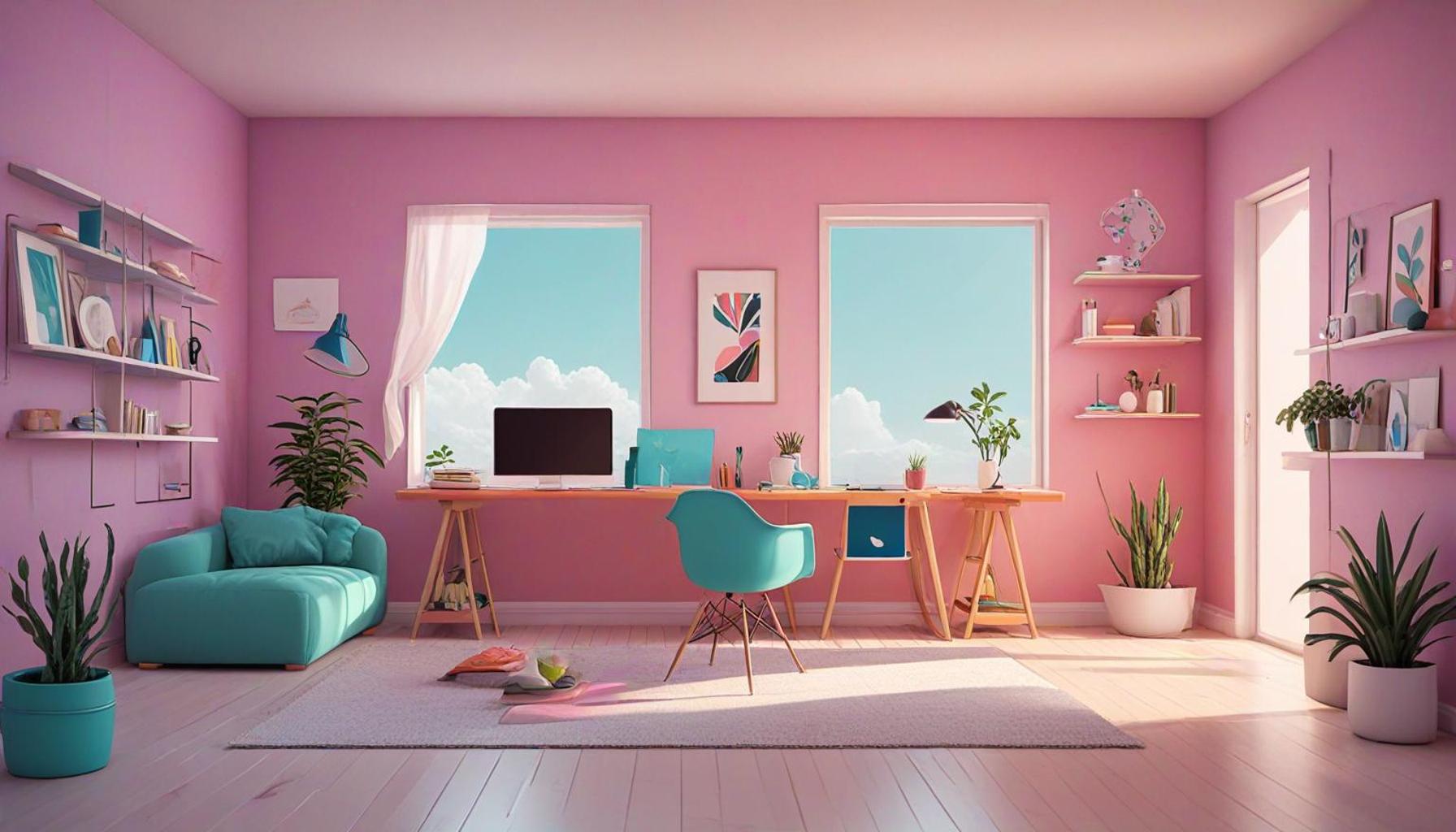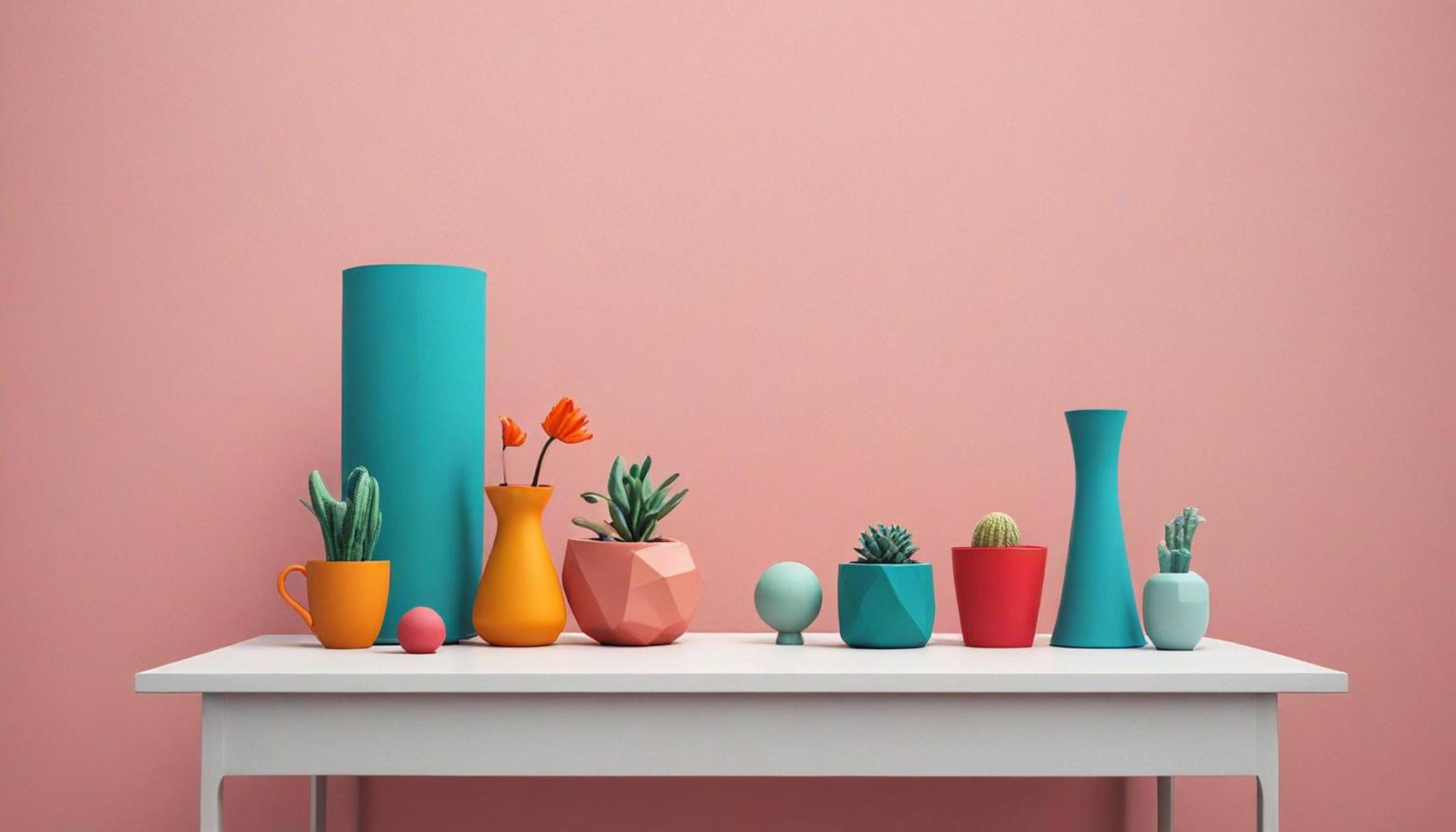How to Create Functional Zones in Minimalist Environments to Optimize Space Usage

Understanding the Essence of Minimalism
In today’s fast-paced world, creating a serene, functional environment is more important than ever. Minimalism is not just a design trend; it embodies a lifestyle that promotes simplicity and efficiency. By stripping away the unnecessary, minimalism highlights the beauty of functionality and form. This philosophy emphasizes the idea of functionality over excess, allowing spaces to breathe, which can lead to reduced stress and increased mental clarity.
Why Zone Your Space?
Functional zoning can transform how you interact with your surroundings. By defining specific areas for various tasks, you enhance productivity and create a visually appealing atmosphere conducive to focus. For instance, a well-zoned home office that separates work from relaxation can help delineate the boundaries between professional and personal time. Consider these benefits:
- Improved organization: Having designated areas for different activities—such as a reading nook, a workspace, and a relaxation area—helps streamline everyday activities, preventing clutter from accumulating in a single space.
- Enhanced focus: Clear zones minimize distractions. A designated “work zone” equipped with the right tools enables you to concentrate better, enhancing overall productivity.
- Efficient use of space: By maximizing every square foot of your environment, you can create a more functional area. For example, using vertical storage solutions in a small apartment can free up floor space while still keeping essentials easily accessible.
Key Elements for Creating Functional Zones
Establishing functional zones in minimalist environments involves thoughtful planning and creativity. Here are a few critical considerations to keep in mind:
- Identify activities: Start by listing tasks you perform regularly and group them according to function. For instance, your kitchen could have specific areas for cooking, eating, and socializing, which not only organizes the space but also enhances its utility.
- Utilize furniture effectively: Choose multi-functional pieces that serve multiple purposes. A sofa bed or a coffee table with storage can be indispensable in maximizing space without sacrificing style.
- Incorporate natural elements: Use plants or natural light to define boundaries organically. A few strategically placed potted plants can establish a refreshing divide between your workspace and lounging area, promoting a sense of calm in your environment.
Exploring these concepts will guide you in optimizing space use, making your minimalist environment not only stylish but also practical. A minimalist approach invites you to reassess your belongings and decor, encouraging a more intentional and fulfilling lifestyle. Embracing such principles can invigorate your living space and enhance daily experiences, steering you towards a life rich in meaning rather than material accumulation.
DISCOVER MORE: Click here for tips on maximizing your space
Crafting Your Space with Purpose
Creating functional zones within minimalistic environments is a significant step toward achieving ideal space optimization. By intentionally segmenting your living area, you can promote an atmosphere that encourages productivity, creativity, and relaxation. This segmentation is particularly essential in smaller spaces, where every square foot counts. The goal is to harmoniously blend aesthetics and practicality, making the best use of available resources while maintaining a sense of openness.
The Power of Purposeful Design
At the heart of functional zoning is the concept of purposeful design. Each area of your home should serve a distinct purpose, limiting the urge to use every surface for multiple functions. This notion allows for clearer navigation within your space, both physically and mentally. Establishing borders—be they visual, physical, or utilitarian—helps in demarcating different zones effectively. By following a few foundational principles, you can start crafting your minimalist oasis.
- Assess Your Lifestyle: Take the time to evaluate how you utilize your space on a daily basis. Are you working from home? Do you frequently host guests? Identifying your core activities will aid in zoning your environment effectively. For example, if home-cooking is a significant part of your life, designating a section of your kitchen for meal prep—and keeping it free from other distractions—could enhance your culinary experience.
- Color and Texture for Division: Utilize colors and textures to define your zones without adding clutter. Soft rugs can delineate a cozy reading area from a sleek workspace, while an accent wall can turn a mundane corner into a vibrant nook. Use light, airy colors to maintain openness in a space while still providing subtle distinctions between functional areas.
- Vertical and Horizontal Space: Emphasizing both vertical and horizontal space will enable you to maximize your environment. Install floating shelves for books and decor, freeing up floor space for other functions, and consider stacking or nesting furniture to create versatility. For instance, a wall-mounted desk can turn any corner into a work zone with minimal footprint.
When designing functional zones, remember that the objective is not simply to organize but to create a sense of flow and balance. Each designated area should encourage engagement without feeling overwhelming. This approach allows for a broad spectrum of activities, from quiet reflection to productive work. In a world often filled with chaos, harnessing the principles of minimalist design can lead to a more serene and fulfilling living experience. By carefully analyzing your needs and creatively utilizing the space at your disposal, you’ll establish a sanctuary that promotes life’s essentials while embracing simplicity.
Utilizing Multi-Functional Furniture
In minimalist environments, every piece of furniture plays a crucial role in maximizing space efficiency. The integration of multi-functional furniture not only saves space but also adds flexibility to the environment. Consider investing in a coffee table that doubles as storage or a sofa bed that provides both seating and sleeping accommodations. These versatile options are essential for creating distinct functional zones while maintaining the simplicity characteristic of minimalist design.
Implementing Color and Light Strategically
The strategic use of color and light can significantly influence the perception of space. Light colors typically make areas feel more open and airy, while accent walls can delineate different zones without physical barriers. In addition, utilizing natural light through large windows or mirrors can enhance the overall ambiance. A well-lit area encourages more activity, making it an effective area for work or relaxation without compromising on aesthetics.
Defining Zones with Rugs and Dividers
Using rugs to define different areas is an excellent approach to creating functional zones in minimalist spaces. A vibrant area rug can visually separate a living area from a workspace, adding warmth and texture. Additionally, opting for room dividers or decorative screens not only serves a practical purpose by creating separation but also adds an element of style. These options allow for an easy reconfiguration of the space as needs change.
Incorporating Smart Storage Solutions
Effective storage is paramount in minimalist design. Maximize vertical space by installing shelves or cabinets that draw the eye upward, creating an illusion of a larger space. Utilize under-bed storage or built-in cabinets to keep clutter out of sight. The key to successful storage in minimalist environments lies in selecting items that blend seamlessly with the overall aesthetic while maintaining functionality.
Creating Zones with Purpose
Each zone within a minimalist space should serve a distinct purpose, ensuring that every square foot is utilized efficiently. Identify the primary activities that will take place in each area and design accordingly. For instance, if a zone is designated for work, incorporate a desk and ergonomic chair that promote productivity. Conversely, a relaxation zone can feature plush seating and soft lighting to enhance comfort.
| Category 1 | Category 2 |
|---|---|
| Multi-Functional Zones | Expands usability by blending living, working, and leisure areas. |
| Optimized Layout | Enhances flow and accessibility, making the space more livable and enjoyable. |
The combination of these designs and strategies for creating functional zones in minimalist environments attracts those who seek to cultivate both beauty and utility in their living spaces. Understanding and applying these principles will lead to an organized and inviting atmosphere, inviting further exploration into the world of minimalist design.
DISCOVER MORE: Click here to dive deeper
Strategic Furnishings and Accessories
Implementing functional zones in a minimalist environment extends beyond layout and color palette; it fundamentally involves the careful selection of furnishings and accessories that not only serve a purpose but also contribute to the overall aesthetic. Each piece should be chosen with intention, ensuring it enhances the designated area without overpowering the space. Consider how multifunctional furniture can play a pivotal role in optimizing your space.
Embrace Multifunctional Furniture
In a world where urban living often necessitates smaller spaces, investing in multifunctional furniture becomes essential for creating effective functional zones. Look for items that can serve dual or even triple purposes—such as a coffee table that doubles as a storage unit or a sofa bed that can accommodate guests without the need for a dedicated guest room. These pieces facilitate seamless transitions between different activities within a single area, enhancing the fluidity of your space.
- Modular and Flexible Designs: Consider modular furniture, which allows for reconfiguration based on your needs at any given moment. For instance, sectional sofas can be re-arranged for social gatherings or pulling apart to give more open floor space when not in use. This kind of flexibility ensures that each zone can adapt according to your current activities.
- Lightweight and Mobile Options: Select lightweight furniture to enable easy movement between zones. A rolling cart can serve as a kitchen island, a mobile bar, or a craft station, shifting settings effortlessly as needed. Products designed for mobility prevent unnecessarily cluttering specific zones, maintaining an unobstructed feel throughout your home.
- Streamlined Accessories: Choose accessories that complement functionality without compromising on simplicity. Instead of multiple decorative items, opt for a few well-curated pieces that can also act as organizers or storage. For instance, decorative baskets can serve as both storage for blankets and an elegant touch to your living area.
Integrating Technology Thoughtfully
As our lives become increasingly intertwined with technology, ensuring that your functional zones include a defined technological aspect is crucial. Think about how devices like smart speakers, tablets, or laptops fit into your design. When optimizing for space usage, consider these tips:
- Wiring Solutions: Organize your cords through cable management solutions that are both practical and visually pleasing. Concealing wires not only reduces visual clutter but also allows zones to appear clean and orderly.
- Built-In Technology: Explore furniture with built-in charging stations or integrated sound systems, which can minimize the need for additional gadgets and accessories that may clutter your space.
- Smart Lighting: Incorporate lighting that can be controlled by smartphone applications, allowing you to adjust ambiance without the need for multiple lamps or switches, further streamlining each functional area.
When designing your functional zones, strive for a cohesive look that enables each area to serve its intended purpose while supporting the surrounding zones. By prioritizing multifunctionality, you not only make efficient use of space, but also foster an inviting home environment that exemplifies the beauty of minimalist living. Engaging thoughtfully with furnishings, accessories, and technology establishes a balance that encourages both functionality and tranquility within your everyday surroundings.
DISCOVER MORE: Click here for practical tips on organizing small spaces
Conclusion: The Art of Functional Minimalism
In a world where living space continually shrinks, the importance of mastering functional zones within minimalist environments cannot be overstated. By implementing intentional design choices, leveraging multifunctional furniture, and seamlessly integrating technology, you can create a home that feels expansive despite its size.
Each functional zone plays a significant role in encouraging not just efficiency, but also a sense of comfort and tranquility in your daily life. A space that caters to multiple activities—from relaxation to work—enhances both productivity and leisure, allowing for greater adaptability in today’s fast-paced environment. When selecting furnishings, prioritize those that serve more than one purpose while maintaining a cohesive aesthetic that embodies the minimalist ethos.
Additionally, thoughtful organization is key; managing technology and minimizing clutter is essential to maintaining visual peace. The strategic placement of versatile items, alongside streamlined accessories, cultivates an atmosphere that supports the essence of minimalist living without sacrificing functionality.
As you explore the dynamic relationship between form and function, consider this a personal journey toward self-discovery within your home. Embracing the concept of functional zones is not just about optimizing space—it’s about crafting a sanctuary that reflects your unique lifestyle and preferences. Dive deeper into the principles of minimalist design, and witness how transforming your space can lead to a more peaceful, organized, and fulfilling life. Explore, experiment, and enjoy the process of creating a balanced environment that truly feels like home.


